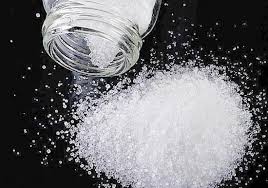
Baryta iodata
Latin name: Baryta iodata
Short name: Bar-iod
Common name: Barium Iodide | Barium Iodate | Iodide of Baryta
Primary miasm: Sycotic Secondary miasm(s): Tubercular, Syphilitic
Kingdom: Minerals
Family: Inorganic Salt (Baryta + Iodum)
- Symptomatology
- Remedy Information
- Differentiation & Application
Baryta iodata is a double chemical salt, prepared from barium and iodine. In homeopathy, it is potentised from a triturated mixture of the pure salt, which is crystalline, white, and soluble in water. Its combined elements unite the glandular, degenerative, and senescent-tissue sphere of Baryta carbonica with the scrofulous, catarrhal, and absorptive action of Iodum [Clarke]. This fusion makes it particularly valuable in slow, indolent glandular swellings with a tendency to suppuration, especially in scrofulous children or elderly with degenerative change.
In crude form, barium iodide has been studied in chemical industries for specialised synthesis; iodine salts have long been used in medicine for their absorptive effect on glandular swellings, though crude barium salts are toxic.
Introduced into homeopathic practice via clinical observation rather than extensive Hahnemannian proving. Most pathogenetic detail comes from the provings of Baryta carbonica and Iodum, blended with clinical data from 19th-century physicians such as Hale, Burnett, and Clarke.
- Lymphatic and Endocrine Glands: Especially tonsils, parotids, cervical, axillary, inguinal [Clarke].
- Thyroid Gland: Enlargement, induration, subacute inflammation.
- Respiratory Mucous Membranes: Chronic catarrhal inflammation, thick discharges.
- Arteries and Heart: Sclerotic changes in elderly; arteriosclerosis with glandular atrophy [Hering].
- Skin and Subcutaneous Tissue: Indolent, scrofulous swellings.
- Immune System: Low resistance to infections in children and aged [Hale].
- Warm, dry weather [Clarke].
- Moderate exercise in open air.
- Light covering in bed for those with thyroid congestion.
- Cold, damp weather [Hering].
- Exposure to cold air on head and neck.
- Suppressed discharges or sudden checking of perspiration.
- Mental exertion in elderly or mentally weak constitutions.
- Baryta carbonica – Pure senility or childishness without the intense catarrhal and absorptive gland action of iodine.
- Iodum – More rapid emaciation and restless energy; Bar-iod. is slower, with more induration.
- Calcarea iodata – Glandular swellings in flabby, overweight children; Bar-iod. in thinner, more scrofulous or elderly types.
- Lycopodium – Right-sided glandular swellings, more digestive flatulence and liver involvement.
- Complementary: Calcarea phosphorica, Silicea.
- Antidotes: Dulcamara (for damp cold aggravation).
- Follows well: Iodum in chronic glandular disease; Baryta carbonica in senility.
Baryta iodata is the meeting point of immaturity and degeneration — the child who has not yet developed and the old person who is slipping back. It resolves the slow, cold, indolent swelling of glands and supports the aged heart and vessels. It is for the slow-moving pathology of life’s extremes: childhood’s scrofulous glands and old age’s sclerotic vessels.
- Excellent in chronic hypertrophied tonsils in underdeveloped children.
- Useful in elderly with arteriosclerosis and chronic bronchitis.
- Indurated glandular swellings after repeated inflammation.
Mind:
- Fear of strangers in children
- Senility, mental weakness
- Anxiety about health
Head:
- Vertigo on rising
- Heaviness of head
Throat:
- Tonsils, chronic enlargement
- Difficulty swallowing solids
Chest:
- Bronchitis, chronic, elderly
- Cough with rattling mucus
Skin:
- Eczema, chronic, behind ears
- Indurations, glandular
Generalities:
- Glandular swellings, chronic
- Ailments in children and aged
Clarke J.H. – Dictionary of Practical Materia Medica: Detailed clinical notes on glandular enlargement and senility.
Hering C. – Guiding Symptoms: Catarrhal, glandular, and vascular degeneration features.
Hale E.M. – New Remedies: Clinical observations on scrofulous children.
Boericke W. – Pocket Manual: Summary of indications and modality profile.
Allen T.F. – Encyclopedia: Background from Baryta and Iodum provings.
Hughes R. – Cyclopaedia: Pathogenetic basis from constituent remedies.
Farrington E.A. – Clinical Materia Medica: Relationship between Baryta salts and iodine remedies.
